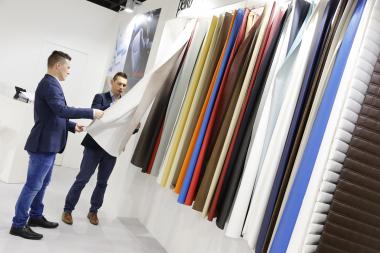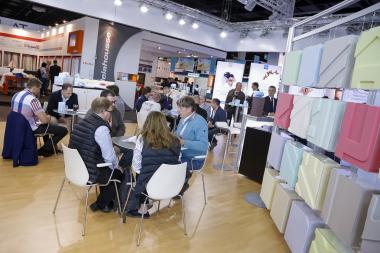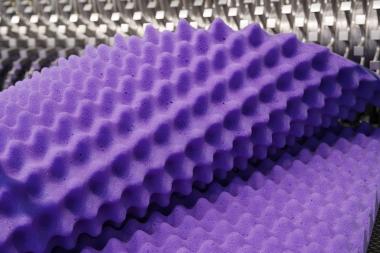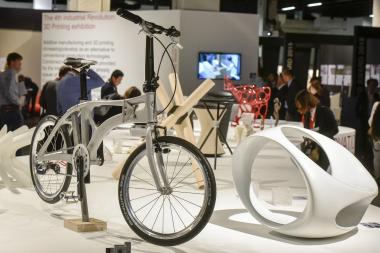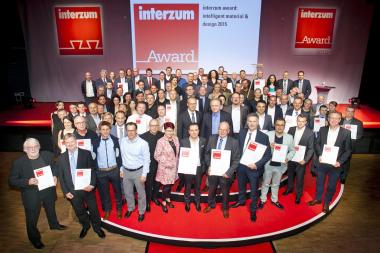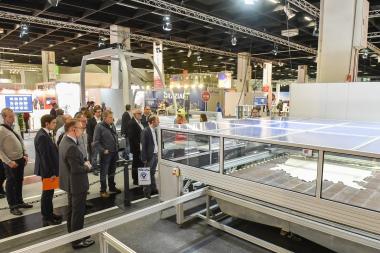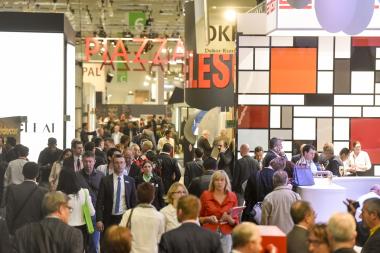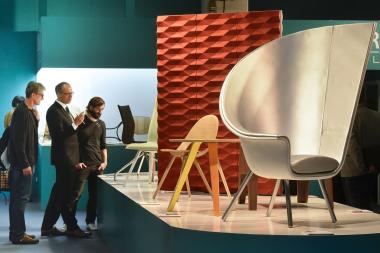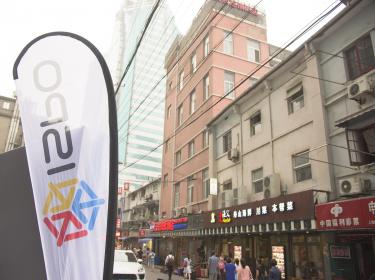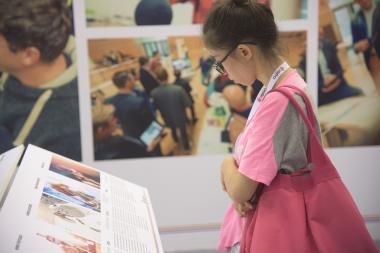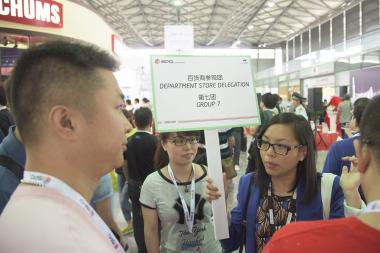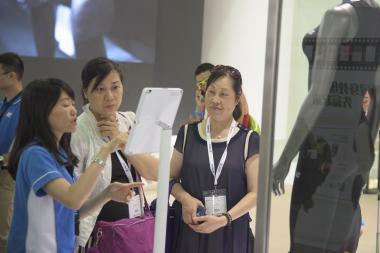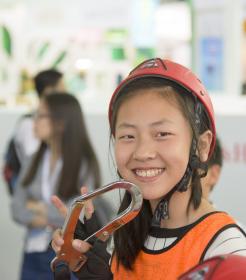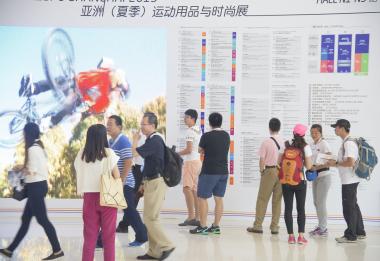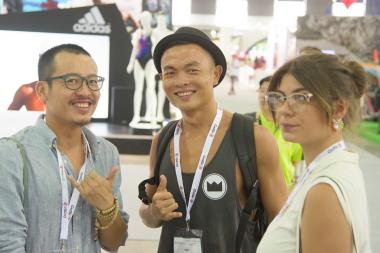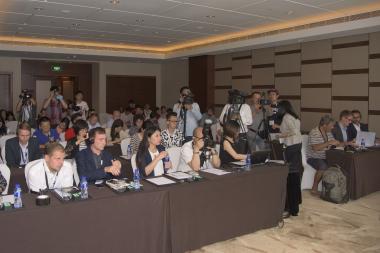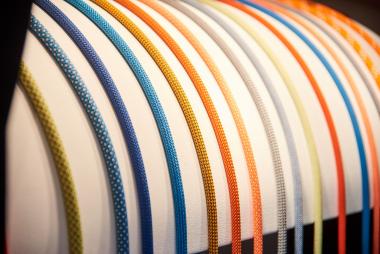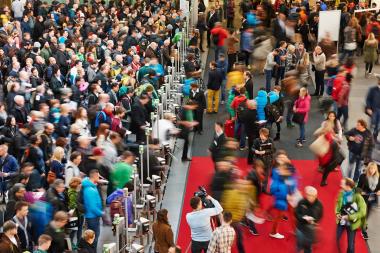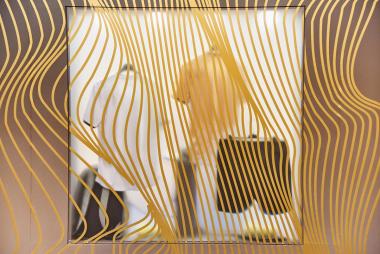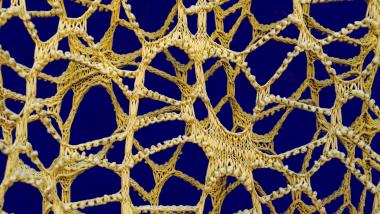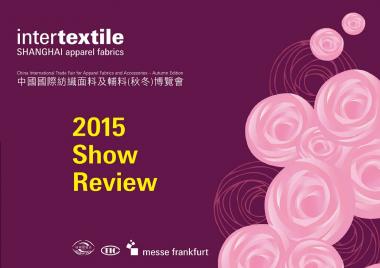INTERZUM 2017: FROM UPCYCLING TO THE TINY HOUSE
- Groundbreaking ideas
interzum is a unique platform for exciting new ideas and innovations: right on cue when the start of spring leaves its first traces in nature, the leading international fair for the furniture and interior construction industries' supplying sections also turned its attention to nature. From biomaterials and green innovations to upcycling, future home lifestyles were the talking point this month, with the other major theme being interzum's importance for design, interior decor and architecture.
"Upcycling" is one of the words to keep in the back of your head at interzum 2017. It refers to a kind of recycling where selected products are reused and, in the ideal scenario, new, high-quality materials for completely new products are produced. From paper and clothing to fabrics, almost anything that would otherwise end up in the rubbish can be reused with the right creative mindset. Upcycling isn't just fun; it helps to protect our environment. Resources circulate, and less waste is produced. What's more, we get a "new" product at a lower cost or no cost at all - a win-win situation. The special Circular Thinking event area at interzum will present ideas, products and manufacturers, and provide an overview of sustainable upcycling. It's also where visitors will find chairs made from biomaterials. Seats made from plant or vegetable waste? It may sound a little strange at first, but the idea is actually as simple as it is ingenious. After all, the raw materials are freely available in plentiful quantities and can be sustainably reused. The Zostera Stool by designer Carolin Pertsch, for example, is made from seagrass that is washed up on the coasts.
Natural materials and conscious use of resources will have an immense influence on how we live in the future, probably more so than ever before. The global population is constantly growing, and supplies of resources are dwindling. This is yet another good reason to visit the special Circular Thinking event area to find some inspiration. One organisation that has done just that is the American Hardwood Export Council (AHEC). Taking its inspiration from nature, the Workshop of Dreams shows just what can happen when American hardwoods are used creatively. interzum will present creative and surprising designs, including The Smile pavilion, a wooden installation.
So much sustainability and innovation should, of course, be rewarded, too. The Green Product Award is presented in 14 categories at the fair. True to its motto, "How will we live tomorrow?", it recognises exceptionally innovative and green products.
How we will live tomorrow is also a question that the Tiny House examines. Living space is becoming more and more expensive, and this is driving the search for solutions that can offer maximum comfort in a limited space. On an area of just 8 square metres that can be surveyed at a glance, the Tiny House is a home in miniature that provides everything you need for a space-saving life and more besides: the house is on wheels, so there are no limits to its mobility.
The special Mobile Spaces event area will also explore the immense impact of mobility on our lives. Cars, planes and ships mean that we are more mobile today than ever before. Designing for these mobile spaces calls for individual solutions because they have their own specific requirements. Surfaces, textiles and fittings will be presented in the event area as ideally suited examples of mobile furnishings, especially in caravans.
This year interzum will present a host of diverse ideas for designing future living spaces. This rich source of inspiration is something that many leading names value and appreciate, not least international architect Peter Ippolito. Professor Peter Zec of Red Dot is also keeping a close eye on current developments and industry trends, and spoke highly of the development of natural materials and how they can be combined with cutting-edge technology. To do justice to these innovations, the interzum award: intelligent material & design will be presented in Cologne.
And to make sure no innovations go undiscovered, Koelnmesse is committed to representing young companies at interzum. This initiative is supported by the German Federal Ministry for Economic Affairs and Energy's (BMWi) funding programme. Eligible companies can benefit from assistance with trade fair costs and have the opportunity to present their innovations and market them.
How we will design our future living spaces is the focus of this year's interzum. The world's leading trade fair provides the ideal platform for all kinds of groundbreaking innovations and will do much more than just start a conversation about tomorrow's worlds of interior design.
Koelnmesse is the world's top trade fair organiser for the areas of furnishing, living and lifestyle. At the trade fair hub of Cologne, the leading international fair imm cologne as well as the trade fair formats of LivingKitchen, ORGATEC, spoga+gafa, interzum and Kind + Jugend rank among the internationally renowned and established industry meeting places. These fairs comprehensively represent the upholstered and case furniture segment, the kitchen industry, the office furniture sector and outdoor living as well as the innovations of the furniture supply industry. Over the last few years, Koelnmesse has specifically added international fairs in the most important fast-expanding markets to its portfolio. These include the LivingKitchen China/CIKB in Shanghai, interzum guangzhou in Guangzhou and Pueri Expo in Sao Paulo. With ambista, the network of the interior decorating industry, Koelnmesse offers direct access to relevant products, contacts, competence and events.
Further information: http://www.global-competence.net/interiors/ and http://www.ambista.com


